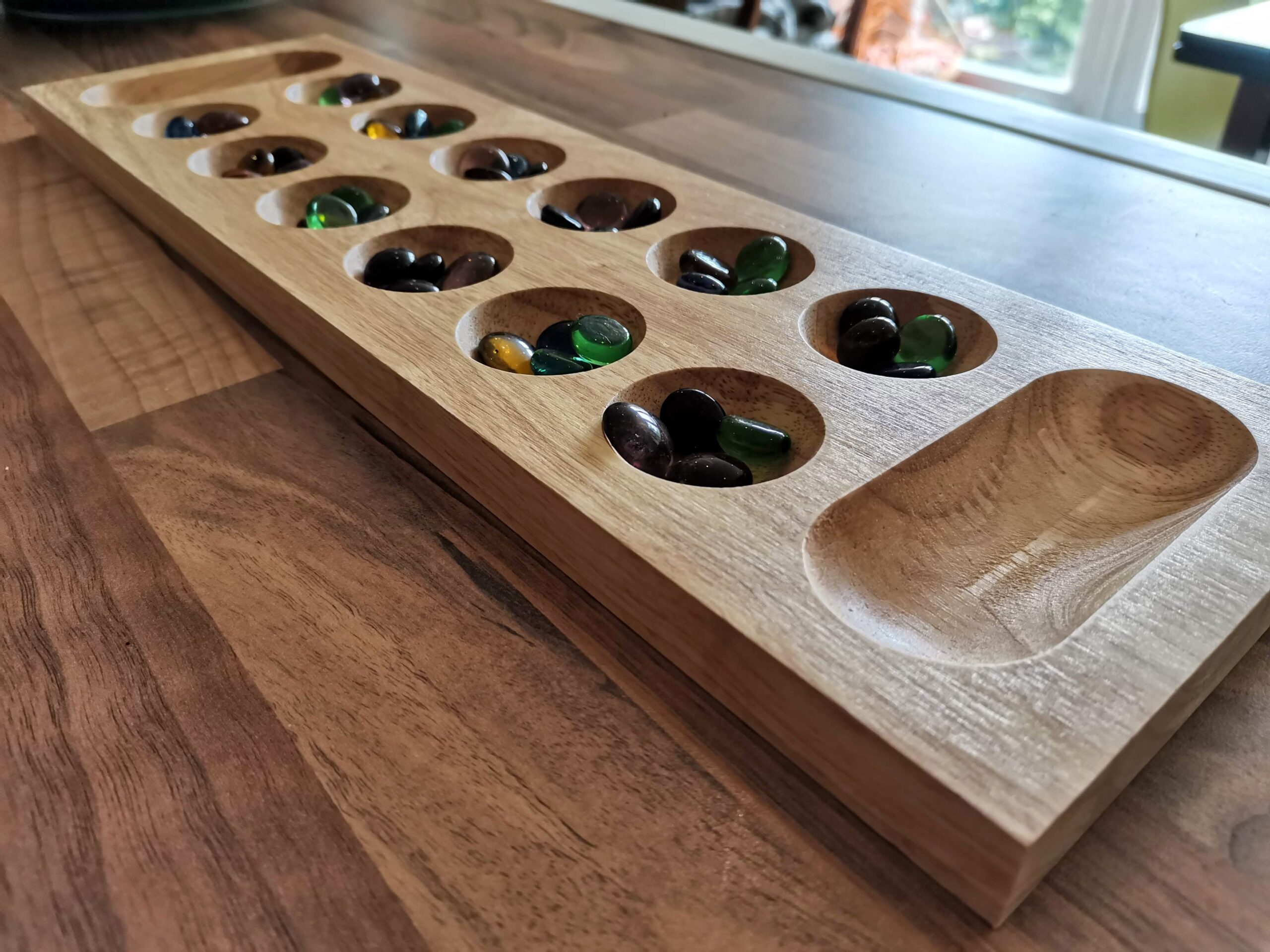Expeditions Review

A Scythe sequel? Sign me up! I love Scythe, the alternate reality, early 20th-century setting with its steampunk mechs is wonderful. The game itself is great too, it does a brilliant job of making an asymmetric Euro game look like a skirmish game. Expeditions dons the garb of its predecessor and while it keeps the concept of point-to-point movement, this game throws deck-building into the mix with a modular board that changes every time you play. It’s a good game in its own right, but its biggest problem is actually in staying in the Scythe universe. Even though the original game’s combat was very light touch, it was still there. It’s absent in Expeditions, and the whole thing feels like it might have done better to take a fresh theme and setting.
What in the X Files is going on?
The Scythe universe makes a decent effort of doing some world-building. Expeditions moves the setting to Siberia. A massive meteorite has crashed at Tunguska, waking up a load of ancient corruption which was apparently lying dormant. An expedition to investigate it has gone missing so it’s up to you, war heroes from Europa (from Scythe), to head into the frozen wastes to explore and to find fortune and glory.
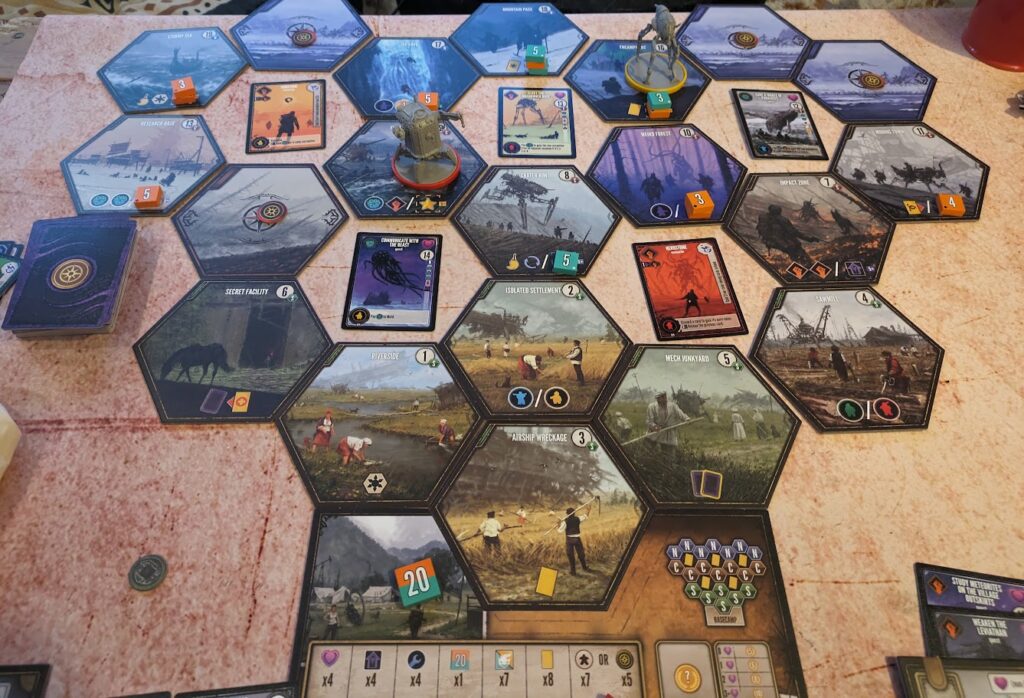
It’s a pretty cool story, and in some ways it does a good job of sewing the theme into the game’s patchwork quilt. Most of the hex tiles which make up the landscape are face-down and unexplored when you start the game. Once you explore them you’ll find new resources and actions to take, and also churn up some of the aforementioned corruption. My biggest problem with the theme is trying to understand what this corruption actually is. It’s represented by colourful tiles with numbers on them, and by using a Vanquish action you can spend your accrued power and guile to remove them, but I’m still none the wiser as to what I’m actually doing there.
The rulebook tells me I’m “removing ancient evil”, but it’s never explained how, or what’s happening. For me to be complaining about this as a massive fan of beige, arid Euros might come across as hypocritical and stupid, but it matters here. The huge, gorgeous mech minis look so cool. They look like they’re ready to kick ass in a kind of coal-fired Pacific Rim tribute. But nothing happens. I move my green marker 4 steps down a track and remove a green wooden block with a 4 printed on it. It feels like a missed opportunity to add a thick, shiny layer of thematic gloss.
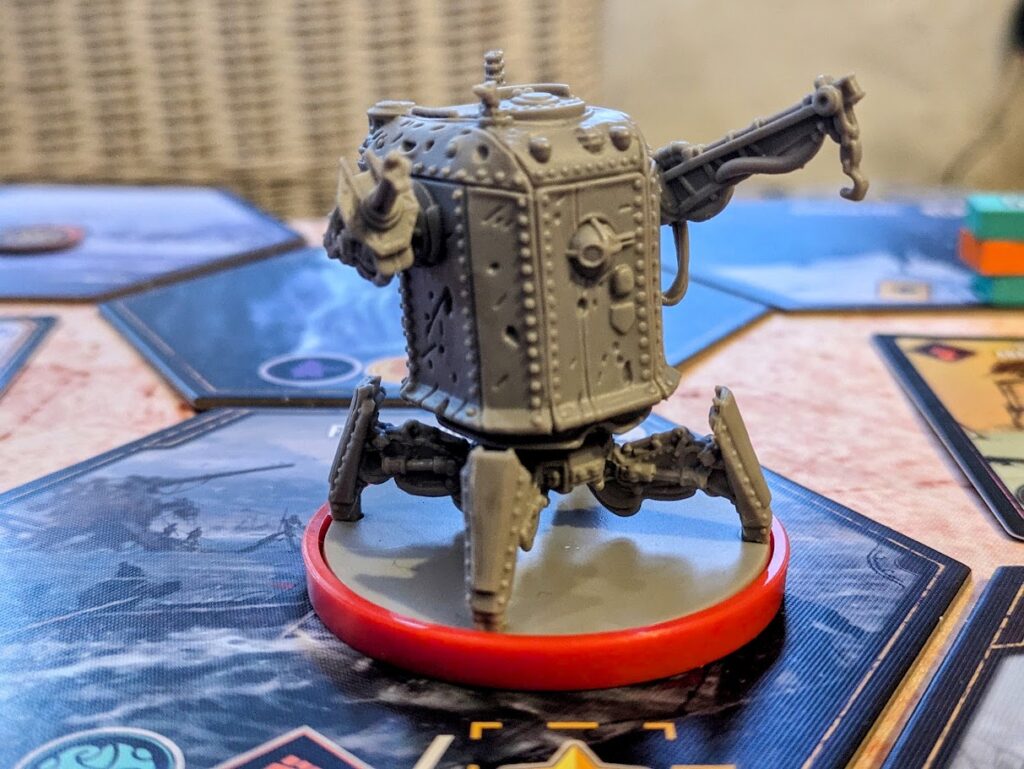
The goal of the game borrows heavily from Scythe. There are milestones on offer, called Glory in Expeditions. If you meet the criteria for one (e.g. solved four quests, collected seven corruption tokens) and take a Boast action, you can place a star on the Basecamp board. The first player to place four glory tokens triggers the end of the game. So you get the same feeling of a race, which I like. I like it when a game’s end is driven by the players, and it works well here.
Decking in the frozen North
Expeditions is a latecomer to the 2020 party of ‘deck-building + another mechanism’ which the likes of Lost Ruins of Arnak and Dune Imperium (review here) championed. During the game you add cards to your deck, which can in turn be played any time you take the appropriate action, and many cards have a boosted action available if you’re able to place a worker of the correct colour on the card.
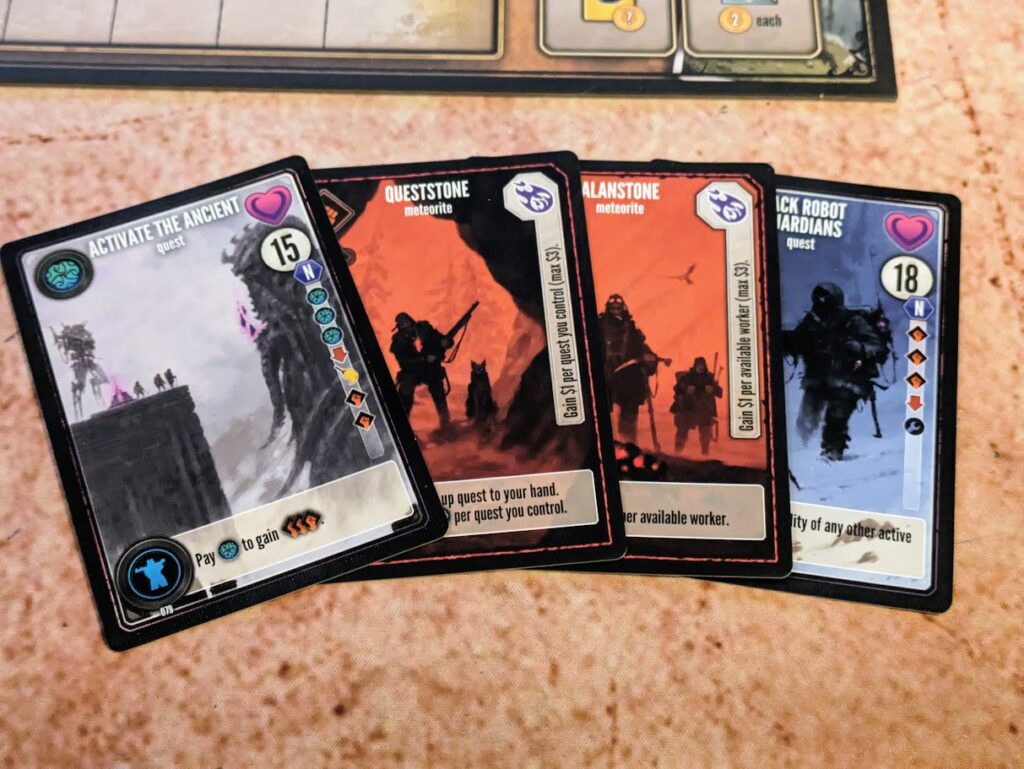
Workers, along with cards, coins and other resources, find their way onto your board any time you use the Gather action. You gather whatever’s on the hex where your mech is, which is where you need to use your third available action – Move – which shockingly enough lets you move around the map. The action selection is fun, actually. The three actions are represented by squares on your player board, and on your turn you move your little cube from one square to another. The square you cover is blocked, so you get to take the two actions left uncovered. It adds a nice little element of planning. You can take a full refresh turn to get your played cards back into your hand, along with your workers, and you get to do all three actions next time, but it can feel like a wasted turn. If you plan well you can use rescue actions from tiles and cards to move a played card back into your hand, prolonging the time you’re actively doing things in the game.
In a game where you’re racing the other players to be the one to trigger the end, downtime turns can really hurt if you take them too often.
The deckbuilding is the most fun part of the game. Some of the games using these mixtures of mechanisms don’t really feel like true deck-building in the Dominion sense of the word. Even Arnak and Dune Imperium, excellent as they are, don’t let you cycle through your deck very often. Expeditions does it well, and you’ll end up playing some of your cards a lot of times, which is refreshing.
Grit in the gears
As much as I enjoy Expeditions – and let’s be clear here, I do like the game – there are some things which feel a bit disjointed to me. First on the list is the use of coins in the game. You punch out so many coins of different denominations when you first open the box (80 in total) that you assume they’re a big deal. They aren’t. You can play half an hour of the game and take a load of turns without even collecting a coin, and when you do, it’s often one coin at a time. Coins count towards your score at the end of the game, but that’s all you really do with them. What use is money in a game where you can’t spend money?
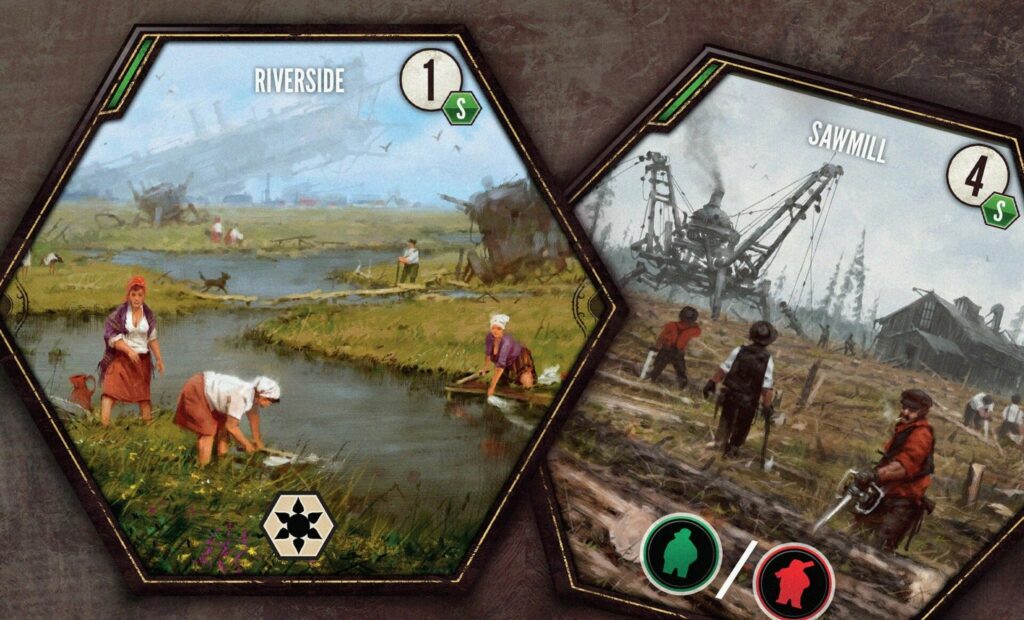
The other thing is the constant back and forth that happens at different times during the game. The setting of the game makes you feel like as a veteran of war with a huge repurposed mech at your disposal, you’d probably head into the frozen wastelands prepared. But you end up coming all the way back to where you start to grab another worker, or a card, or whatever it might be. It’s like you and the other mechs are all trampling back and forth all over the place like worker ants.
While I’m talking about the mechs, it’s also worth mentioning that there is no combat in Expeditions. If you though the awesome-looking mechs in Scythe were under-used, Expeditions will set a new, lower benchmark. There’s not even any area-control, other than the rule that no two mechs can share a tile. It all just begs the question – why are the mechs even in the game? I can’t help but feel like I should record a full game, then play it back at 10x speed and watch the mechs bimble around to the Benny Hill theme music.
Final thoughts
Expeditions is a good game. Maybe even a very good game. It has some issues, for sure, which I’ve mentioned above, but I’d still recommend it despite them. The biggest issue is probably the thing which made me the most interested in the game in the first place, and that’s piggybacking on the Scythe theme and name. It didn’t need to be, at all. I would not be remotely surprised to learn that the basic game and its mechanical component parts were designed with a different theme and setting in mind. Maybe even no theme. The whole pickup-and-deliver aspect of completing quests in the game (spend certain things in a certain space) could so easily be applied to any number of other, drier Euro themes.
It’s a big, impressive box with a great insert and those amazing mech minis, but they somehow feel redundant. They all have a slightly asymmetric boost to some actions, but they’re underused. They’re glorified shopping trolleys.
Griping aside, the game itself is great fun to play. I love the race feeling to the game, I love the simple suspense of flipping over a new tile to see what’s on the other side, and I love how simple the game feels to play. It’s obviously had plenty of development done on it, which is exactly what I come to expect from Jamey’s games now, and that professional touch is there on every aspect of the presentation. It’s also surprisingly quick to setup. play, and pack away, which is not what I come to expect of games that come in boxes this big. It’s also easy to teach, much moreso than Scythe.
Now that I write this and think about it, if I wanted to induct a new player to the world of Scythe, I would definitely start with Expeditions before moving on to Scythe. It’s a much smoother, friendlier introduction with a lower rules overhead. If you go into Expeditions expecting more Scythe, you might be disappointed, but if you love the world Scythe is set in, you’ll love to explore more of the lore and characters. I’d still love to see what it would have been if it was in a setting of its own though. A solid, if not outstanding, addition to the Stonemaier family of games.
Review copy kindly provided by Stonemaier Games. Thoughts and opinions are my own.
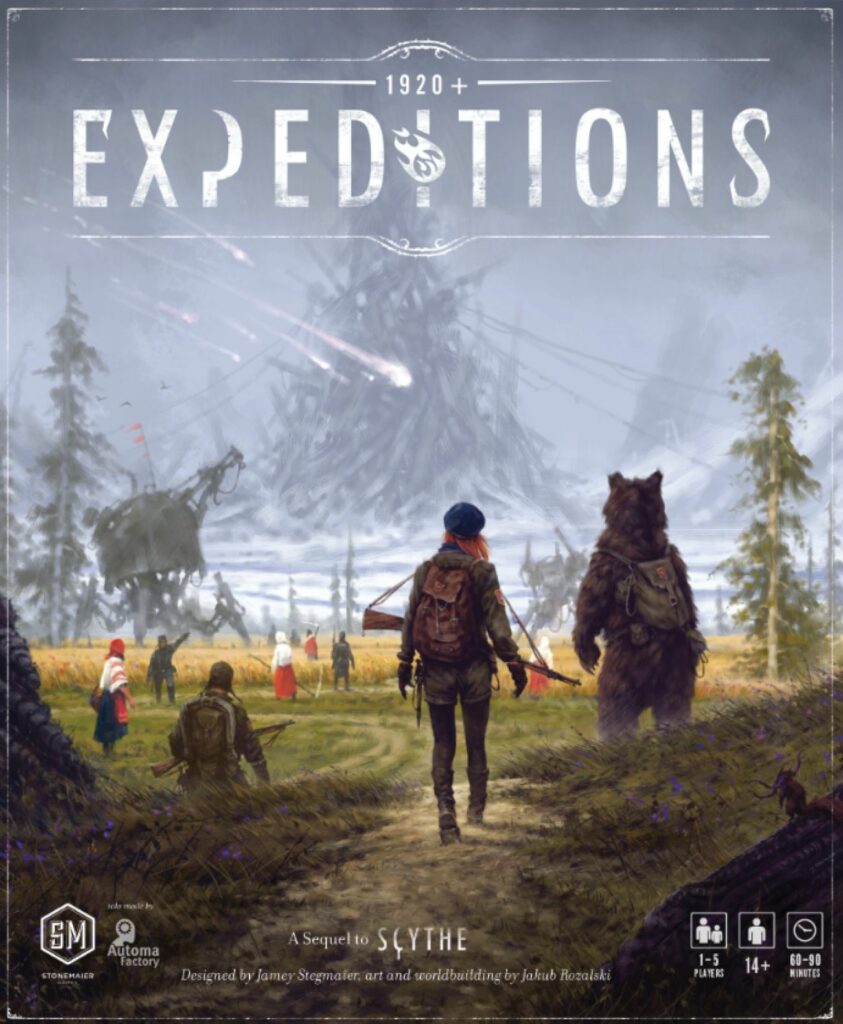
Expeditions (2023)
Design: Jamey Stegmaier
Publisher: Stonemaier Games
Art: Jakub Rozalski
Players: 1-5
Playing time: 60-90 mins









